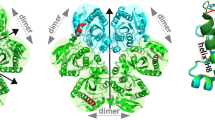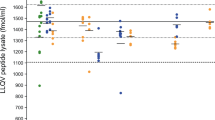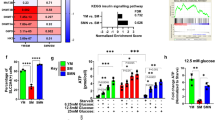Abstract
THE deamination of adenine nucleotides homogenates and extracts of skeletal muscle is usually ascribed to the action of an enzyme, originally described by Schmidt1, which specifically deaminates adenosine monophosphate. Direct deamination of adenosine triphosphate has not been demonstrated, though the work of Banga and Josepovits2 suggested a simultaneous production of inorganic phosphate and ammonia from adenosine diphosphate. This effect required the presence of myosin plus a ‘protin’ preparation, and an isomer of adenosine diphosphate was postulated as an intermediate compound. This claim has been criticized adversely by Bailey3.
This is a preview of subscription content, access via your institution
Access options
Subscribe to this journal
Receive 51 print issues and online access
$199.00 per year
only $3.90 per issue
Buy this article
- Purchase on SpringerLink
- Instant access to full article PDF
Prices may be subject to local taxes which are calculated during checkout
Similar content being viewed by others
References
Schmidt, G., Z. physiol. Chem., 179, 243 (1928).
Banga, I., and Josepovits, G., Hungarica Acta Physiol., 1, 82 (1947).
Bailey, K., Biochem. J., 45, 479 (1949).
Kleinzeller, A., Biochem. J., 36, 735 (1942).
Author information
Authors and Affiliations
Rights and permissions
About this article
Cite this article
WEBSTER, H. Direct Deamination of Adenosine Diphosphate by Washed Myofibrils. Nature 172, 453–454 (1953). https://doi.org/10.1038/172453a0
Issue date:
DOI: https://doi.org/10.1038/172453a0



